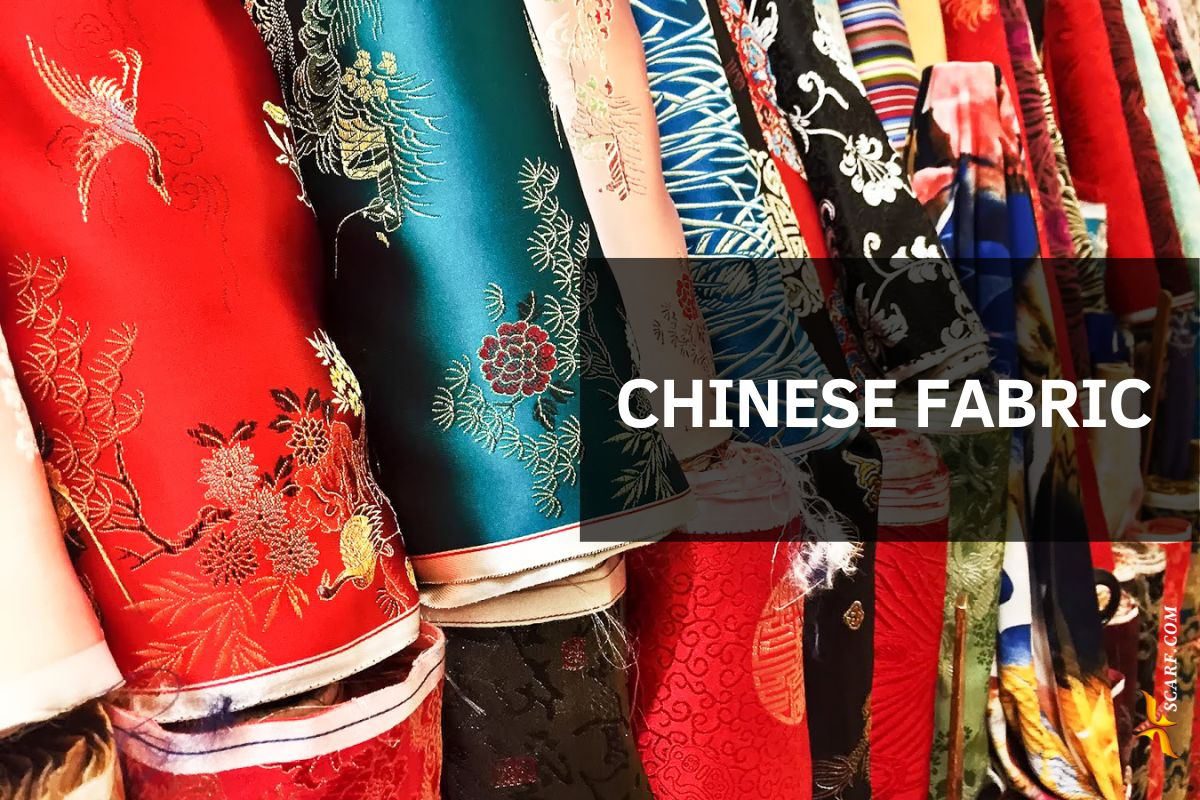China has a rich history of producing exquisite fabrics that have captivated the world for centuries. From intricate silk to vibrant brocades, Chinese fabric is renowned for its exceptional quality and craftsmanship.
In this article, I will take you on a journey into the world of Chinese fabric, exploring its history, traditions, types, production techniques, popular uses, and where you can buy these exceptional textiles. Join me as we unravel the secrets behind the enduring legacy of Chinese fabric.
- History and Traditions of Chinese Fabric
- Types of Chinese Fabric
- Traditional Techniques Used in Chinese Fabric Production
- Popular Uses of Chinese Fabric
- What is the Most Expensive Fabric in China?
- What are the 4 types of silk?
- What is Chinese Silk Called?
- What is the Traditional Textile of China?
- Where to Buy Chinese Fabric
- Conclusion
History and Traditions of Chinese Fabric
Chinese fabric has a history that dates back thousands of years. The Chinese were pioneers in textile production, and their techniques and designs became highly sought after across the ancient Silk Road. The art of silk production originated in China around 4,000 years ago and quickly became a symbol of luxury and refinement. The Chinese mastered the intricate process of raising silkworms, extracting silk threads from their cocoons, and weaving them into exquisite fabrics.
Throughout history, Chinese fabric played a significant role in the country’s culture and traditions. Silk was considered a precious commodity and was often used as a form of currency. It was also associated with royalty and was used to create extravagant garments for emperors and empresses. The Chinese also developed unique dyeing and weaving techniques, such as the intricate brocade weaving method, which produced stunning patterns and designs.
Types of Chinese Fabric
Chinese fabric encompasses a wide range of textiles, each with its own unique characteristics and uses. One of the most famous types of Chinese fabric is silk, known for its lustrous sheen and smooth texture. Silk can be further categorized into various types, such as mulberry silk, wild silk, and tussah silk. Each type has its own distinct qualities and is used for different purposes, ranging from clothing to home furnishings.
Apart from silk, other popular types of Chinese fabric include brocade, damask, and jacquard. Brocade is a luxurious fabric characterized by its raised patterns and metallic threadwork. Damask features elaborate woven patterns on a contrasting background, while jacquard is known for its intricate and detailed designs. These fabrics are often used for traditional Chinese clothing, ceremonial garments, and decorative purposes.


Wool
Known for its warmth and good elasticity but tends to pill.
Cashmere
Offers excellent warmth and is lighter than wool, though it’s less durable.
Silk Velvet
Characterized by its silky feel, wrinkle resistance, and good elasticity.
Malden
A type of woolen fabric known for not pilling and being wear-resistant.
Nylon
Notable for its exceptional abrasion resistance.
Denim
Distinguished by its cotton composition and durability.
Cotton
Popular for its moisture absorption and heat resistance.
Linen
Known for its coolness and noble fiber qualities.
Mulberry Silk
Offers smoothness and warmth, ideal for different climates.
Viscose
Made from natural cellulose, known for its soft fabric and good moisture absorption.
Traditional Techniques Used in Chinese Fabric Production
Chinese fabric production involves a combination of traditional techniques and modern innovations. Traditional methods, passed down through generations, are still used today to create fabrics of exceptional quality. One such technique is the intricate art of hand-weaving, where skilled artisans meticulously weave threads together to create beautiful patterns and designs.
Another traditional technique is hand-dyeing, where natural dyes extracted from plants, minerals, and insects are used to create a vibrant and long-lasting color palette. The Chinese also employ techniques like embroidery, beadwork, and appliqué to enhance the beauty and intricacy of their fabrics. These traditional techniques require great skill, patience, and attention to detail, resulting in textiles that are truly works of art.
Popular Uses of Chinese Fabric
Chinese fabric finds its way into various aspects of daily life, from clothing to home decor. Traditional Chinese clothing, such as the cheongsam for women and the changshan for men, is often made from silk or other luxurious fabrics. These garments are adorned with intricate embroidery and are worn on special occasions or as a symbol of cultural pride.
Chinese fabric is also used in the creation of accessories, such as scarves, shawls, and handbags. These accessories showcase the beauty and craftsmanship of Chinese textiles and add a touch of elegance to any outfit. Additionally, Chinese fabric is often used in the production of home furnishings, such as cushion covers, tablecloths, and curtains, bringing a touch of luxury and sophistication to living spaces.
What is the Most Expensive Fabric in China?
When it comes to the most expensive fabric in China, silk takes the crown. Known as the “Queen of Fabrics,” silk has a long history of being highly valued and sought after. The intricate process of silk production, coupled with its luxurious qualities, makes it a prized fabric. The rarity of certain types of silk, such as mulberry silk, adds to its exclusivity and drives up its price. Silk remains a symbol of prestige and elegance, making it the top choice for those seeking the finest Chinese fabric.
What are the 4 types of silk?
Mulberry Silk
The most common silk, made from Bombyx mori larvae fed exclusively on mulberry leaves. It’s known for its smoothness and high quality.
Tussar Silk
A wild silk from the larvae of several different silk moths. It has a rich texture and a natural gold color, distinguishing it from other silks.
Eri Silk
Known as “peace silk” because it’s made without killing the silkworm. This silk is durable and has a heavier feel, suitable for various textiles.
Muga Silk
Exclusive to the Assam region of India, it’s prized for its natural shimmering golden color. Muga silk is known for its durability and glossy texture.
What is Chinese Silk Called?
Chinese silk is commonly referred to as “sī chóu” in Mandarin, which translates to “silk fabric.” Silk fabric has been an integral part of Chinese culture for centuries, and its production techniques have been perfected over time. The Chinese take great pride in their silk heritage and continue to produce some of the finest silk fabrics in the world.
What is the Traditional Textile of China?
The traditional textile of China is undoubtedly silk. Silk has been deeply ingrained in Chinese culture and traditions for thousands of years. It was considered a symbol of wealth, status, and refinement. The Chinese were the first to discover the art of silk production and have been perfecting their techniques ever since. Silk remains an integral part of Chinese identity and continues to be cherished and celebrated as the traditional textile of China.


Where to Buy Chinese Fabric
If you’re looking to purchase Chinese fabric, there are several options available. One of the best ways to buy authentic Chinese fabric is by visiting local markets and specialty stores in China. These places offer a wide range of fabrics, from silk to brocade, allowing you to explore the rich diversity of Chinese textiles.
You can also find Chinese fabric online through reputable sellers and platforms that specialize in Asian textiles. Make sure to do your research and read reviews to ensure the authenticity and quality of the fabric. Or find a reliable purchasing agent, choose wozo sourcing, they can help you find a good manufacturer.
Conclusion
Chinese fabric has a rich and enduring legacy that spans thousands of years. From the luxurious silk that adorned emperors to the intricate brocades that captivate the world, Chinese fabric continues to be celebrated for its exceptional quality and craftsmanship. The traditional techniques and attention to detail employed in its production make Chinese fabric truly unique. Whether you’re looking to wear a piece of history or add a touch of elegance to your home, Chinese fabric offers a journey into a world of textile excellence that will leave you in awe. So, embrace the allure of Chinese fabric and experience the timeless beauty it has to offer.
Explore the world of Chinese fabric and indulge in the elegance of silk and other exquisite textiles. Discover the captivating allure of Chinese fabric at scarf.com.



